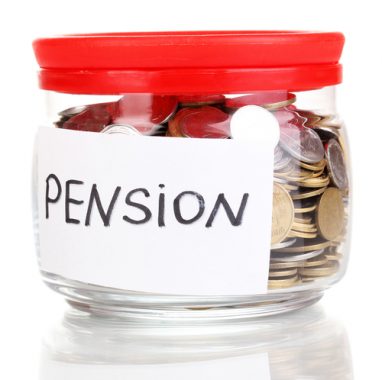Q&A: Income drawdown from pensions

Q What is income drawdown?
Income drawdown is a way of taking income from a pension scheme without having to purchase an annuity or scheme pension. It has been around since 1995.
In simple terms, the pension fund remains invested and an income is drawn from it.
There are two types of income drawdown, capped drawdown and flexible drawdown.
Q What is the difference between capped and flexible drawdown?
Under capped drawdown the maximum income you are allowed to ‘draw down’ is set by a number of factors:
-the value of your fund
-your age
-the yield on 15-year gilts
-an annuity rate provided by the Government Actuary’s Department (GAD).
Previously, the maximum income was 120% of this basis amount and this was increased to 150% in the last Budget.
Your income level is set, and then reviewed every three years until age 75 and annually thereafter by the same factors. The review sets the maximum income allowable for the period, but you can elect to take any amount lower than this, even nil.
Previously, to qualify for flexible drawdown, you must have had at least £20,000 per annum income (known as the minimum income requirement) from secured pensions. The minimum income requirement has been reduced to £12,000, which effectively means that more people will qualify for flexible drawdown. Secured pensions include, amongst others, the state pension and your NHS pension. Under flexible drawdown there is no maximum income limit and you can effectively draw all the fund in one payment should you so wish, although it is subject to income tax.
The change to the maximum capped drawdown limit and minimum income requirement took effect on 27 March. Further changes to drawdown were also announced but these are currently being consulted upon.
Q How much tax do I pay on drawdown income payments?
When moving funds into drawdown, both capped and flexible, you can normally take up to 25% of the fund as a lump sum which is tax-free. The amount of tax-free lump sum you can take is further limited by the lifetime allowance and benefits that you may have received from any other pension scheme, such as your NHS pension.
When income payments are made to you from the drawdown fund they are subject to income tax at your marginal rate, i.e. 20%, 40% or 45% depending on the level of income paid and what other taxable income you may have. This is where the flexibility around the amount of income you take can provide significant advantages, as you can structure payments in the most tax-efficient manner.
Care needs to be taken around flexible drawdown, as whilst it may be tempting to take the entire fund as one payment, the increased amount of income may push you into a higher bracket for income tax or possibly cost you your personal allowance.
Q Does my drawdown fund count towards the lifetime allowance?
Yes, at the point you decide to draw down your pension the value of the fund is tested against the lifetime allowance, known as a benefit crystallisation event. The value tested against the lifetime allowance is the total amount moved into drawdown (including any tax-free lump sum payment). As an example, if the value of your pension fund is £120,000 you could draw £30,000 as a tax-free lump sum (25%), with the balance of £90,000 being retained within the scheme to be drawn down as income. It is the full value of £120,000 which is tested against the lifetime allowance.
In addition, funds in drawdown are potentially subject to a second test against the lifetime allowance. At 75, any increase in the fund value (after the tax-free cash payment) also counts against the lifetime allowance.
Similarly, if the fund is used at a later point to purchase an annuity or scheme pension, again any increase in the value of the fund also counts towards the lifetime allowance.
Q What happens to the fund when I die?
Once the fund is in drawdown there are several options on death. Your surviving spouse, or other dependant, can take over the drawdown pension, with income levels being set depending on their own age. They can also use the fund to purchase an annuity.
Alternatively, or if there is no spouse or dependant, the fund can be paid out to the nominated beneficiaries less a 55% tax charge.
The death benefit position is in stark contrast to a fund that is not yet in drawdown which, on death before age 75, can be paid to a nominated beneficiary without any tax charge applying.
Q What is being consulted upon?
-The main area raised is that the Chancellor is proposing to remove the minimum income requirement from flexible drawdown entirely. This appears to mean that there will be absolutely no constraints on how much of your pension fund you can draw down in any one year, regardless of what other pension income you may have.
-A ban on transfers out of unfunded public sector pension schemes, such as the NHS scheme, is also being considered.
-An increase to the normal minimum pension age is being considered, with a proposal to increase it to age 57 from 2028.
-Finally, there is to be a consultation on the 55% tax charge on death benefits.
The changes announced in the Budget offer much greater flexibility in income choices from pension funds. The areas being consulted upon could potentially increase this even further. Advice on options at retirement becomes ever more essential.
Gareth Rose is a chartered financial planner at Rowanmoor Consultancy Limited, Independent Financial Advisers.
Pulse July survey
Take our July 2025 survey to potentially win £1.000 worth of tokens













